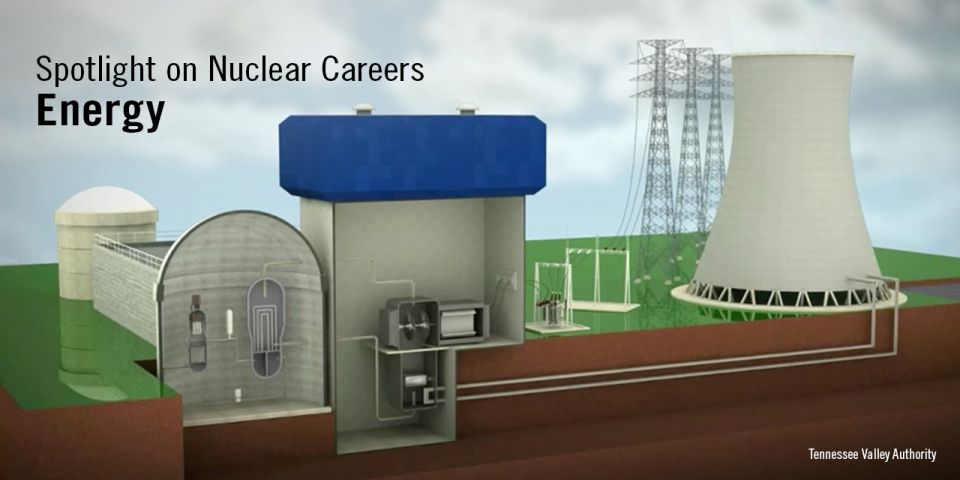Development: Taking Charge of Your Career
 Every member of the nuclear industry has a responsibility to focus on his or her own career development as a component of continuous improvement. While this is good advice, young professionals often struggle with how to identify these development opportunities. The question of how to overcome this challenge spirited discussion at the 2011 Young Professionals Conference.
Every member of the nuclear industry has a responsibility to focus on his or her own career development as a component of continuous improvement. While this is good advice, young professionals often struggle with how to identify these development opportunities. The question of how to overcome this challenge spirited discussion at the 2011 Young Professionals Conference.
 "Young professionals are told to ask for opportunities and additional responsibilities in order to develop ourselves, but we're never given examples of what opportunities our employers think we should be looking for," said Adam Nygaard, a member of the North American Young Generation in Nuclear (NA-YGN). "I believe that career development is the primary responsibility of the individual, but employers are stakeholders as well. It's good that they have finally provided guidance and are working toward closing the knowledge and experience gap in our industry."
"Young professionals are told to ask for opportunities and additional responsibilities in order to develop ourselves, but we're never given examples of what opportunities our employers think we should be looking for," said Adam Nygaard, a member of the North American Young Generation in Nuclear (NA-YGN). "I believe that career development is the primary responsibility of the individual, but employers are stakeholders as well. It's good that they have finally provided guidance and are working toward closing the knowledge and experience gap in our industry."
The good news is that young professionals no longer have to guess at the answer to this question. The U.S. electric industry, through the Center for Energy Workforce Development, has created two new resources to help industry leaders, educators, and young professionals navigate development.
These resources are competency models that lay out the knowledge, skills, and abilities that every new employee should master to become a fully competent energy worker. The energy industry is using these models to develop new energy education programs and to improve industry training to ensure that there are qualified energy workers readily available to replace retirees.
"Competency models are a great resource for young professionals to reference before heading into their annual appraisals with their supervisors," said Gale Hauck, co-chair of the ANS Young Members Group. "These models make it easy for employees to identify their own development gaps and to ask supervisors to include the appropriate opportunities to close these gaps in their personal development plans."
The Energy Industry Competency Model: Generation, Transmission and Distribution is made up of stacked tiers divided by blocks representing competencies. Each block represents a focus area that needs to be developed in new energy workers. This resource was developed to help non-licensed operators, maintenance personnel, and technicians.
The Engineering Competency Model builds off of the previous model and replaces the top three tiers with engineering-specific competencies. Once an engineer meets all of the entry level competencies they can move on to the 3+-year-experienced engineer competencies.
Hauck said, "It's nice to have a development road map. Young professionals no longer have to struggle to figure out what development opportunities they need, they can focus on being developed."
Chris Hearn, U.S. Affairs chair of NA-YGN, added, "Now that these resources are available, conference planning committees and local chapters of NA-YGN can use this information to design professional development sessions. All you have to do is look at the competency model and identify which competency your members need the most help with."
North American Young Generation in Nuclear is a professional society for those working in nuclear science and technology. It has 8,500 members and 97 local chapters. The ANS Young Members Group is a technical group of the American Nuclear Society with more 1,000 members.
______________________________
Jennifer Varnedoe is chair of the ANS Young Members Group. She is a project engineer with Advanced Programs at GE Hitachi Nuclear Energy. She has been an ANS member since 2007 and is a guest contributor to the ANS Nuclear Cafe.
Elizabeth is past president of NA-YGN. She is manager of Industry Infrastructure at the Nuclear Energy Institute. In this role she is focused on work force development and supply chain issues for the nuclear industry. Prior to this job, she worked for Constellation Energy in its new nuclear division, UniStar Nuclear.








